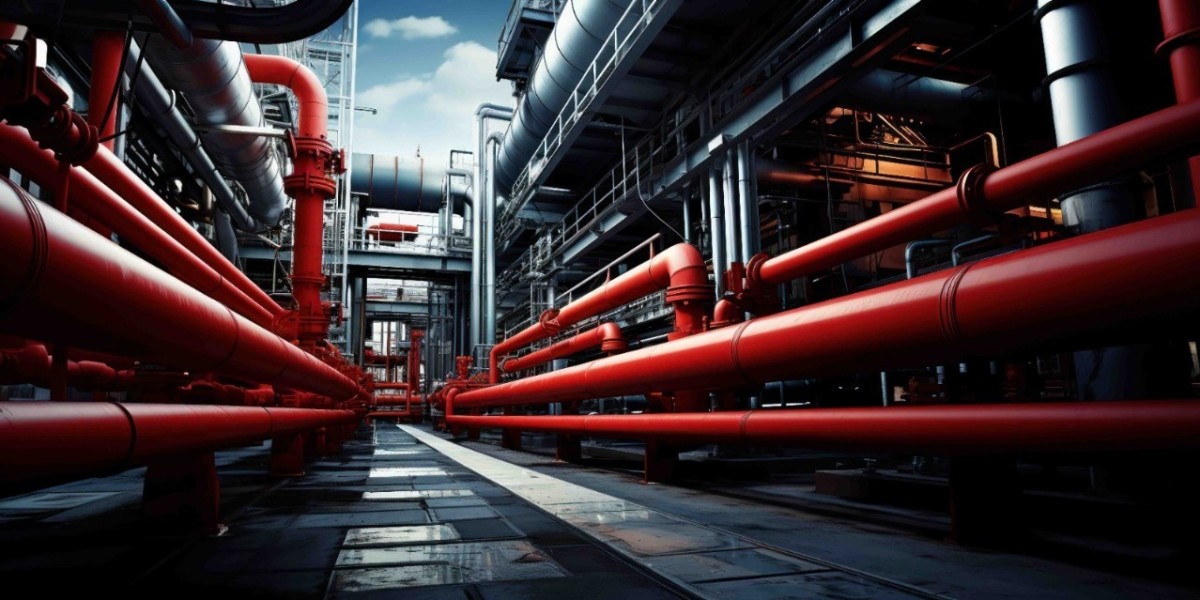Water treatment facilities rely on industrial valves to regulate, control, and direct the flow of water, wastewater, and chemicals. These valves play a crucial role in ensuring the smooth operation of water treatment plants, preventing contamination, and managing pressure levels efficiently. Different types of valves serve various functions, depending on the specific requirements of the water treatment process. In this article, we will explore the most commonly used industrial valves in water treatment and their applications.
1. Gate Valves
Gate valves are one of the most widely used valves in water treatment applications. They are designed to allow or stop the flow of fluid completely but are not ideal for regulating flow.
Key Features:
Provides a tight seal when fully closed
Minimal pressure drop when open
Available in different materials such as cast iron, stainless steel, and brass
Applications:
Used in water distribution pipelines
Ideal for on/off control in wastewater treatment plants
Common in raw water intake systems
2. Ball Valves
Ball valves use a rotating ball with a hole through its center to control the flow of water. They provide quick shutoff and are known for their durability.
Key Features:
Quarter-turn operation for fast control
Excellent sealing properties
Suitable for high-pressure applications
Applications:
Used in chemical dosing systems
Common in high-pressure pipelines
Ideal for controlling flow in desalination plants
3. Butterfly Valves
Butterfly valves have a disc that rotates within the valve body to control flow. These valves are lightweight and compact, making them ideal for large-diameter pipelines.
Key Features:
Low maintenance requirements
Quick operation with minimal torque
Available in different materials for corrosion resistance
Applications:
Used in large-diameter pipelines for water transmission
Common in filtration and disinfection systems
Applied in wastewater and sewage treatment plants
4. Check Valves
Check valves allow fluid to flow in only one direction, preventing backflow and contamination. These valves operate automatically based on the flow pressure.
Key Features:
Prevents reverse flow
Requires minimal maintenance
Available in swing, lift, and ball check designs
Applications:
Used in pump discharge lines
Common in backflow prevention systems
Applied in wastewater and stormwater drainage
5. Globe Valves
Globe valves are used for throttling flow and providing precise control over water and chemicals in treatment processes.
Key Features:
Good flow regulation capabilities
Higher pressure drop compared to gate valves
Available in manual and automated versions
Applications:
Used in chemical dosing and treatment systems
Common in boiler feedwater control
Applied in sludge handling processes
6. Pressure Relief Valves
Pressure relief valves help maintain safe pressure levels in pipelines by automatically releasing excess pressure.
Key Features:
Protects against overpressure conditions
Automatically adjusts to pressure fluctuations
Prevents damage to pipes and equipment
Applications:
Used in high-pressure water distribution networks
Common in desalination plants
Applied in chemical processing units
7. Pinch Valves
Pinch valves use a flexible rubber sleeve that can be squeezed shut to control flow. They are particularly effective in handling slurries and wastewater containing solids.
Key Features:
Simple design with minimal moving parts
Suitable for abrasive and corrosive fluids
Excellent sealing properties
Applications:
Used in sludge and slurry handling
Common in wastewater treatment facilities
Ideal for handling corrosive chemicals
8. Diaphragm Valves
Diaphragm valves use a flexible diaphragm to regulate flow. They provide leak-proof sealing and are ideal for handling corrosive and abrasive fluids.
Key Features:
Excellent corrosion resistance
Easy to clean and maintain
Available in manual and automated versions
Applications:
Used in chemical dosing systems
Common in water purification and filtration
Applied in wastewater treatment plants
9. Knife Gate Valves
Knife gate valves are designed for on/off control of thick slurries, wastewater, and other viscous materials in treatment plants.
Key Features:
Designed for heavy-duty applications
Can cut through solid particles in fluids
Provides a tight shutoff
Applications:
Used in sludge and wastewater management
Common in industrial water treatment plants
Ideal for handling raw sewage
10. Air Release Valves
Air release valves remove trapped air from pipelines, preventing air pockets that can disrupt the flow and cause pressure fluctuations.
Key Features:
Prevents airlock in pipelines
Ensures smooth flow of water
Reduces energy consumption in pumping systems
Applications:
Used in large water distribution networks
Common in wastewater treatment plants
Applied in irrigation systems
Conclusion
Selecting the right industrial valve for a water treatment process is crucial for efficient and safe operation. Each valve type serves a specific function, from regulating flow to preventing backflow and pressure surges. By understanding the key features and applications of different valves, engineers and plant operators can optimize their water treatment systems for reliability and performance.
For expert guidance on choosing the best valves for your water treatment facility, consult with industrial valve specialists who can recommend solutions tailored to your needs.








